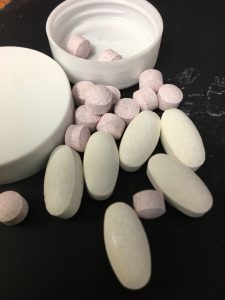We have a silent killer amongst us. It is the use and abuse of opioids! In fact, opioid use and abuse is a classified epidemic.
The opioid epidemic refers to the growing number of deaths and hospitalizations due to opioid use.
According the Centers for Disease Control and Prevention (CDC), overdose deaths from opioids, including prescription opioids, heroin, and synthetic illicit opioids (like fentanyl), have increased almost six times since 1999.
What is the appeal of opioid abuse? In the 2015 National Survey on Drug Use and Health (NSDUH), 11.5 million adults who abused prescription pain relievers at least once in the past year were asked their reasoning for misuse. The top answer included to relieve physical pain! (63.4%) Other reasons included relaxation, relieve tension, feel good, help with sleep, or to increase or decrease the effects of other drugs (Lipari, Williams, & Van Horn 2017).
There is no doubt that opioids are an effective pain reliever, however, the speed in which this abusive opioid epidemic has grown provides plenty of reasons everyone should be concerned. An opioid addiction can endanger the safety of each of us.
How did this epidemic begin? The epidemic stems from the late 1990’s. At the time, no one knew how quickly misuse of a prescription opioid could lead to an addiction. In a relatively short period of time opioid overdose rates, both prescription opioids as well as illicit synthetic opioids, skyrocketed. In the year 2017 alone, more than 47,000 Americans died as a result of an opioid overdose and 1.7 million individuals suffered from substance use relating to pain killers as a whole (NIH 2018).
The epidemic is also causing serious repercussions socially and economically. The Center for Disease Control and Prevention (CDC) estimates the total cost of opioid abuse to be a $78.5 billion a year and is a burden to our economy. Additional issues associated with opioid misuse can include loss of worker productivity, addictive behavior, and higher crime rates (Rich, Kornfield, Mayes, & Williams 2019).
Every individual can positively contribute to ending this epidemic. Get educated. Be aware of the signs of someone struggling with an opioid abuse and addiction. Recognize character traits associated with opioid abuse like loss of control, preoccupation with drug use, and willingness to continue using despite the negative consequences.
There are promising practices and resources to help end this epidemic. The U.S. Department of Health and Human Services (HHS) is directing their attention to this epidemic with efforts focused on (NIH 2018):
- improving access to treatment and recovery services
- strengthening our understanding of the epidemic through public health surveillance
- providing support for research on pain and addiction
- advancing alternative practices for controlling pain
As well, both National and State Prescription Drug Monitoring Programs (PDMP) are promising drug prevention tools.
Never doubt that a small group of thoughtful committed citizens can change the world; indeed, it’s the only thing that ever has. (Margaret Mead) Together, we can all do our part stop this epidemic.
Bailee Hurd, University of Florida Health Education Intern
Bonner, Michael. “’Opioids Are the Health Crisis of This Generation’.” Southcoasttoday.com, Southcoasttoday.com, 24 Sept. 2017, www.southcoasttoday.com/news/20170922/opioids-are-health-crisis-of-this-generation.
Lipari, Rachel, et al. “Why Do Adults Misuse Prescription Drugs?” Https://Www.samhsa.gov/Data/Sites/Default/Files/report_3210/ShortReport-3210.Html, Substance Abuse and Mental Health Services Administration, 27 July 2017, www.samhsa.gov/data/sites/default/files/report_3210/ShortReport-3210.html.
National Institute on Drug Abuse. “Opioid Overdose Crisis.” NIDA, 22 Jan. 2019, www.drugabuse.gov/drugs-abuse/opioids/opioid-overdose-crisis.
“Opioid Overdose.” Centers for Disease Control and Prevention, Centers for Disease Control and Prevention, 18 Oct. 2019, www.cdc.gov/drugoverdose/.
Rich, Steven, et al. “A New Look at How the Opioid Epidemic Evolved.” The Washington Post, WP Company, 23 Dec. 2019, www.washingtonpost.com/graphics/2019/investigations/opioid-pills-overdose-analysis/.
- It’s Chestnut Season! - December 16, 2022
- Persimmons: Food of the Gods - November 23, 2022
- Have You Ever Thought About Entering Baked Goods in the North Florida Fair? - October 28, 2022

